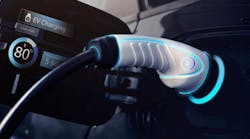The primary functions of engine coolants are to safeguard an engine from overheating at high temperatures and from freezing during cold temperatures. They also keep metal surfaces in the radiator clean and protect against scaling, cavitation and corrosion on engine components.
While the terms “engine coolant” and “antifreeze” typically are used interchangeably, antifreeze refers to products that provide protection against freezing.
Too often, cooling system maintenance is neglected. When this happens, problems such as overheating, corrosion of cooling system components and radiator failure can occur. This eventually can lead to costly vehicle repairs.
Both the U.S. DOT and the American Automobile Association have reported that cooling system failure is the leading cause of roadside vehicle breakdowns.
To gain some understanding about light duty engine coolants, I spoke with Jamie Turner, M&R Environmental’s product manager of Ecofreez Coolants (www.eco-freez.com). The company manufactures a full line of high-quality premium recycled coolants under the Ecofreez brand.
Fleet Maintenance (FM): There are two main types of engine coolants: ethylene glycol and propylene glycol. What are the key difference between the two?
Jamie Turner: Although the chemical composition of propylene glycol and ethylene glycol are quite similar, propylene glycol is less toxic. Ethylene glycol is more cost effective and has better heat transfer, along with a somewhat higher boiling point than propylene glycol.
Ethylene glycol is what you would find in most automotive or heavy duty OEM coolants. The primary exception would be recreational vehicles and some heavy duty equipment working near environmentally sensitive areas.
FM: Is it okay to mix propylene glycol with ethylene glycol?
Turner: In the unlikely situation, propylene glycol can be mixed with ethylene glycol without causing harm to the cooling system. However, mixing does slightly weaken the heat transfer.
Propylene glycol and ethylene glycol are compatible, although it is possible that the additives blended with the two different products may not be.
FM: As the name implies, extended life or long life engine coolants extend their useful life, which helps to reduce maintenance costs, downtime and environmental disposal costs and issues. How do these types of coolants function?
Turner: Conventional coolant formulations include a number of inorganic corrosion inhibitors, known as inorganic acid technology (IAT). These provide fast-acting protection and maintain the pH – a measure of how acidic or basic a substance is.
As the coolant is cooled and heated and exposed to air, the components of the formulation break down over time. At this point, the pH has dropped and the coolant needs to be changed, or in some cases replenished with an SCA (supplemental coolant additive), also known as a booster.
Unlike conventional coolants, extended life or long life coolants do not protect as quickly as conventional coolants.
Organic acid technology (OAT) is used in extended life formulations. The additives of an OAT are not chemically consumed as they perform their function of inhibiting corrosion.
OAT chemicals form a thin protective coating on the inside of the cooling system, which inhibits corrosion. As long as the cooling system is kept “topped-up” with proper extended life product and has a proper dilution ratio, it will continue to function properly.
Both conventional and extended life products require very different procedures and change intervals from each other.
FM: What happens if conventional and extended life coolants are mixed together?
Turner: In some cases, depending on the formulation, the two are not compatible and should not be mixed. Doing so can cause the mixture to become cloudy, precipitation can generate and the coolant will lose its extended life properties.
Some newer OATs are fully compatible with conventional (IAT) and HOAT (Hybrid Organic Acid Technology) products, and are commonly branded as a Global coolant.
FM: What is an HOAT?
Turner: This type of coolant uses both OAT and IAT additives for longer life protection. Hybrids are partially or totally compatible with both conventional and extended life coolants.
FM: With regard to HOAT and OAT, is one considered better than the other?
Turner: Not necessarily. These are two different technologies that meet the same end needs. OATs seem to be evolving as the new industry standard for most new car manufacturers.
FM: Since coolant is clear when it is manufactured, dye is used to color the coolant for identification and marketing purposes. At one time, the color of coolant was an indicator of its formulation and corrosion inhibitor package, but that is no longer the case.
With the wide variety of colors available, how can a service technician know what coolant to use?
Turner: It seems as though vehicle and engine manufacturers have now managed to produce a coolant in every color of the rainbow. It is important to refer to the specification that the manufacturer recommends for the application at hand.
If you do not have access to the correct specification coolant, a quality Global coolant will work well in its place. This is because the specific additives used in a Global coolant are designed not to interfere with the function of other coolants available on the market.
FM: What are the ramifications if different colors of coolants are mixed together?
Turner: In some cases, the only detriment of mixing two colors of coolant will be simply discoloration of the coolant in the system. If the two different colors do not have compatible formulations this can lead to poor coolant function or mechanical issues.
If you are uncertain as to which coolant to use or do not have access to the coolant specific to the application, once again, a good quality Global formulation coolant can be used in its place. Global coolants most commonly come in a chameleon like color designed to take on the dominant color in the vehicles cooling system.
FM: How often should coolant be changed?
Turner: The best practice would be to follow the vehicle or engine manufacturer’s recommended intervals.
If the vehicle is using a conventional (IAT) coolant, it is important to monitor the coolant’s pH levels with the appropriate pH test strip at the time of regular scheduled maintenance intervals. Additives in a conventional coolant will deplete much quicker than an OAT or HOAT formulation.
At that time, a supplemental coolant additive can be added to conventional coolants if it is required.
Most long life or extended life formulations have a minimum life span of five years or 150,000 miles.
FM: Why is it important to have coolant pre-mixed with distilled water?
Turner: Having a coolant already pre-mixed with distilled/de-ionized water removes the potential for contaminants being added to the cooling system. Using concentrated coolant and then adding tap water compromises the coolant’s performance because tap water is simply inconsistent.
Depending on the season and the source of your tap water, the pH level balance (acidity and alkalinity) is inconsistent. Tap water can also contain high levels of corrosive chlorides. You can have the best coolant in the world, but as soon as it is mixed with regular tap water, you have compromised the products performance.
FM: Is engine cooling system performance compromised if recycled coolants are used in place of virgin coolants?
Turner: The quality of recycled product varies from different recycling processes. However, most coolant/antifreeze recycling methods are designed to reformulate performance properties that conform to virgin requirements.
This involves two steps:
- Removing contaminants, such as emulsified oils and heavy metals, either by filtration, distillation, reverse osmosis or ion exchange.
- Restoring critical antifreeze properties with additives. Additives typically contain chemicals that raise and stabilize pH, inhibit rust and corrosion, reduce water scaling and slow the breakdown of ethylene glycol.
The ASTM (American Society for Testing & Material), vehicle and engine manufacturers and various states and provinces have developed guidelines and regulations that govern the quality of recycled antifreeze. It is important that if you are considering a recycled coolant, it meets stringent guidelines set out by a governing body such as ASTM.
FM: What is involved in M&R Environmental’s process for producing its recycled Ecofreez Coolants?
Turner: Our many years of involvement in recycling associations, ASTM and widespread networking within the industry has enabled us to conduct extensive research, testing and experimentation on an array of processes, equipment, chemicals and resources.
To reclaim waste antifreeze, we use state-of-the-art automated vacuum distillation/de-ionization units, as well as carbon filtration. This process removes virtually all contaminants found in used antifreeze, including engine-corroding chlorides and sulfites.
The result is a reclaimed product that is indistinguishable from virgin ethylene glycol. At this point, a proprietary formulation of corrosion inhibitors is added, creating a premium product that offers maximum protection.
FM: What are some reasons fleets should consider using recycled coolants?
Turner: Recycled coolant tends to be more cost effective and demonstrates better price stability than virgin product, as it is not affected by the volatility of the virgin ethylene glycol market. Plus, ethylene glycol is a non-renewable resource.
Recycling is an environmentally responsible approach, as it uses roughly 20 percent less energy than producing a virgin product, which reduces the carbon footprint and helps the environment.




